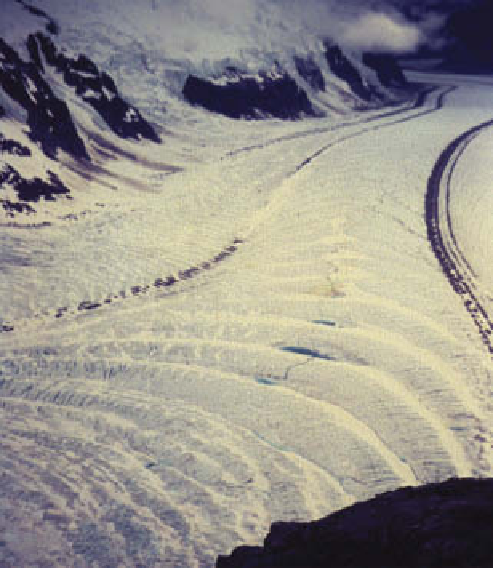Geoscience Reference
In-Depth Information
earthquakes and landsliding in glaciated orogens and is
normally restricted to warm-based glaciers.
by
compressive flow
. Similar flow patterns develop in
glacier long-profiles over bedrock irregularities, gener-
ating brittle failure with diagnostic surface crevasses.
These processes are seen at their best across steep
icefalls
,
with the glacier surface crevassed into huge blocks or
seracs
by extending flow at their crest and fused to form
ogives
in compressive flow at their base (
Plate 15.5
).
Ice velocity is influenced by seasonal changes during
the mass balance year and longer-term climate change.
Accumulation may increase basal shear and accelerate
flow in winter, whilst greater atmospheric warmth and
meltwater generation can have the same effect in summer.
Responses do not have to be immediate and it is quite
common for several years of increased accumulation
to send a pulse or
kinematic wave
of thicker ice down-
glacier at velocities three or four times the average flow.
Metastable glaciers or zones within ice sheets are suscep-
tible to sudden changes in behaviour. Extreme conditions
of ice build-up or sudden transformation of glacier bed
conditions lead to surging. This may be catastrophic for
the glacier if the snout itself advances rapidly. The glacier
is drawn down faster than new ice accumulates, leading
to early downwasting. Surging can also be triggered by
Glacier erosion and entrainment
The low yield stress of ice is scarcely promising for its
erosive power, since the shear strength of intact bedrock
is two to four orders of magnitude larger. Yet glaciers
are undoubtedly one of Earth's most powerful erosion
agents. Glaciers commonly excavate troughs 1-2 km deep
through alpine orogens and beneath ice sheets, where the
mechanisms responsible are inaccessible. This has tested
glaciologists' ingenuity, and a variety of both more and
less acceptable processes have been proposed.
Abrasion, crushing and entrainment
Bedrock striations provide abundant evidence that debris-
charged basal ice can abrade a rigid bed provided that the
abrading tools are harder than the substrate. Without the
supply of larger rock fragments, however, this process is
limited by the progressive comminution of debris and
smoothing of bedrock. This is unlikely to inflict more than
surface ornament (
Plate 15.6
)
and does not occur without
(a)
(b)
Plate 15.5
Extending and compressive flow in the Vaughan Lewis icefall, Alaska. Crevassing fractures the 1 km wide glacier
surface into building-size blocks as it enters the icefall (a) compared with compressive ridges and ogives as it exits into the Gilkey
glacier (b).
Photos: Ken Addison










































